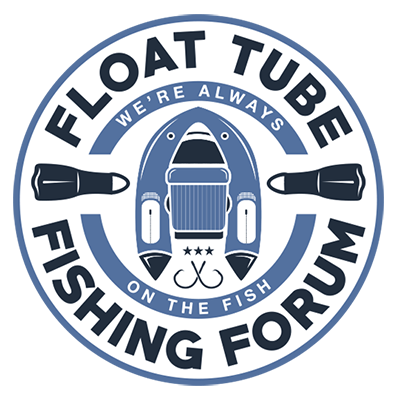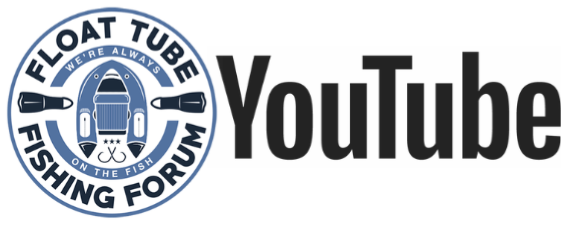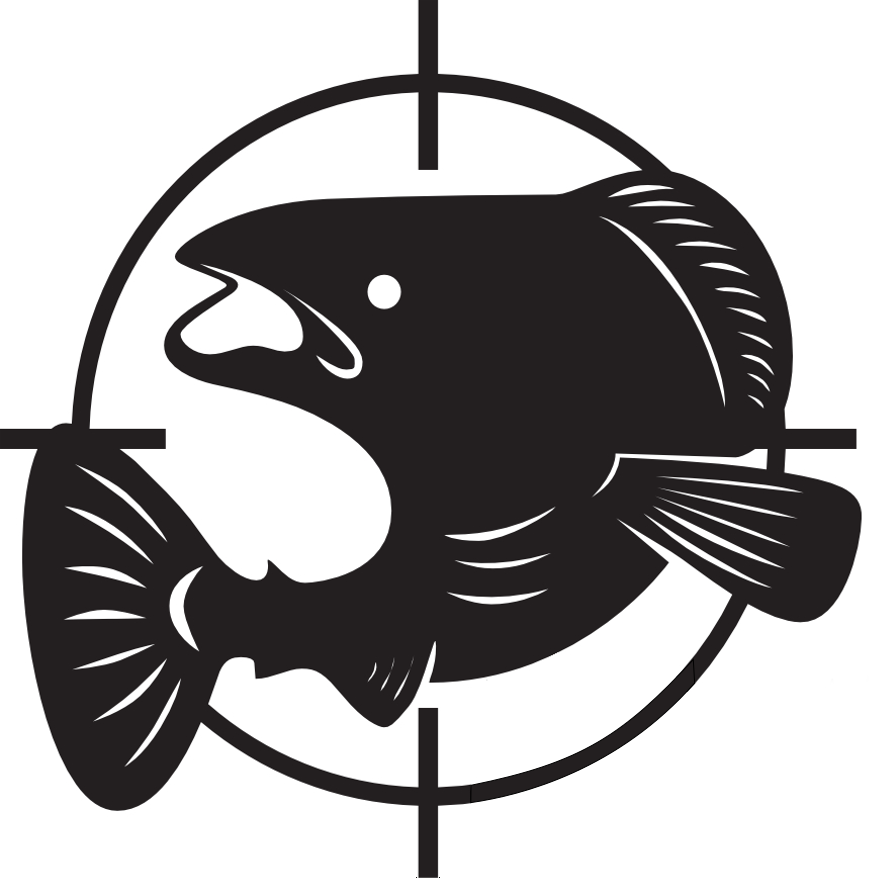This is a post for the people reading the forum who are thinking about getting a float tube, but haven't jumped in.
A little love letter to the sport I love.
In the global world of float tube fishing, my guess would be that saltwater tubers are a very small minority. But I live in Southern California, and our local bays and harbors offer a unique fishing experience that I believe is truly world class.
First off - Forget sharks. No one has ever been attacked in a SoCal harbor or bay. Driving to the water is orders of magnitude more dangerous and I’m not afraid to do that, so I’m not afraid to get in the water once I’m there. Remember, I’m in SoCal, so no gators or bull sharks. If you’re in Florida, it’s a different ball game and I’m out.
Now that we’ve got that out of the way, there are a few particular things that I like about tubing the salt. The fish and the tides are the beginning of it.
The fish are amazing and varied. Catching multiple different species in the same day is not the least bit unusual and they’re all beautiful to look at. There are different species for all parts of the water column and all kinds of bottom structure and they’re all hungry.
Wherever you are, open water, near docks and man-made structure, rocks, eelgrass, sand, mud, you name it and there’s something I want to catch hunting there for food.
Top water and mid-water fish like mackerel and bonito and barracuda are powerful swimmers and fighters and respond well to lures and presentations that mimic small baitfish. They’re also schoolers, so when the bite is on, it’s rockin! Catching a fish on every cast isn’t uncommon when you’re onto a school. Intense fun!
Bottom water fish like spotted and barred sand bass, sculpin, and halibut also respond well to dying baitfish lures and presentations but you can also use baits and presentations that mimic crustaceans like crabs and shrimp. Basically, if it looks alive, they will eat it!
These bottom water guys are also very feisty and put up a heck of a fight. I’m always thinking I have a larger fish than it turns out to be because they fight so hard. And when it comes to halibut, all bets are off. Those guys get huge! More than a few monster halibut have come from SoCal harbors and bays. I haven’t caught my monster yet, but I’m always trying and always hopeful.
Besides the many types of fish and all the myriad ways you can fish for them, the other thing I like is the tides.
Tides mean the water is always moving, it’s always changing. Water levels go up and down and with them “new” water is coming in and “old” water is going out. Everything about the environment the fish live in is constantly changing and the fish are constantly adjusting to those changes. Of course that means I have to adjust as well. It’s fun and it keeps it interesting. Some spots do better at high tide and some at low. Some spots do better with fast moving water and others will pay off when the tide is slack. You can fish the same harbor a million times and every time it's a different place.
The moving water of tidal flow is also a lot like the flow of water in a stream or river and that’s why float tubing in a harbor is like stream fishing. You’re actively moving around and looking for eddy currents and structure that disturbs the water flow and creates areas of low pressure that fish love to hang in. It’s not bait and wait, it’s actively hunting for fish. It’s really fun!
Another reason I like fishing these bays and harbors is not something most people would consider a positive thing, but I do. They’re popular but not too popular. They do get a lot of fishing pressure, but not enough to decimate the fish populations. Catch numbers and fish sizes remain strong so the fish are not getting wiped out, but they do get smart.
You need to be on your game to be successful here. And you need to stay on your toes. I’m always trying to get better. I’m always trying to learn more both from my experiences and what others are doing. It means light tackle fished with finesse. It’s not the kiddie pond with a guaranteed catch. Getting skunked is always an option. I like the challenge because it forces me to keep trying to get better. Skills rule.
The last part of the deal is how great it is to fish from a tube. It’s relaxing. You fish how you like, when you like, and you’re not at the mercy of anyone else. You go out and do your thing.
It’s also quiet. There’s no engine noise or smell. It’s just you and nature.
It may sound strange to use this word, but it’s intimate. You’re not just closer to the water, you’re in it. You’re connected to it… literally. It’s different from being on shore or in a conventional boat.
Like I said before, if you’re somewhere else in the world, maybe this isn’t for you. But if you’re in Southern California and you’re looking to get more time on the water at budget prices, you’d be hard pressed to find a better way to do it than float tube fishing the local bays and harbors.
Tubing the salt may not be for everyone, but it’s for me!
[You must be registered and logged in to see this link.]
A little love letter to the sport I love.
In the global world of float tube fishing, my guess would be that saltwater tubers are a very small minority. But I live in Southern California, and our local bays and harbors offer a unique fishing experience that I believe is truly world class.
First off - Forget sharks. No one has ever been attacked in a SoCal harbor or bay. Driving to the water is orders of magnitude more dangerous and I’m not afraid to do that, so I’m not afraid to get in the water once I’m there. Remember, I’m in SoCal, so no gators or bull sharks. If you’re in Florida, it’s a different ball game and I’m out.
Now that we’ve got that out of the way, there are a few particular things that I like about tubing the salt. The fish and the tides are the beginning of it.
The fish are amazing and varied. Catching multiple different species in the same day is not the least bit unusual and they’re all beautiful to look at. There are different species for all parts of the water column and all kinds of bottom structure and they’re all hungry.
Wherever you are, open water, near docks and man-made structure, rocks, eelgrass, sand, mud, you name it and there’s something I want to catch hunting there for food.
Top water and mid-water fish like mackerel and bonito and barracuda are powerful swimmers and fighters and respond well to lures and presentations that mimic small baitfish. They’re also schoolers, so when the bite is on, it’s rockin! Catching a fish on every cast isn’t uncommon when you’re onto a school. Intense fun!
Bottom water fish like spotted and barred sand bass, sculpin, and halibut also respond well to dying baitfish lures and presentations but you can also use baits and presentations that mimic crustaceans like crabs and shrimp. Basically, if it looks alive, they will eat it!
These bottom water guys are also very feisty and put up a heck of a fight. I’m always thinking I have a larger fish than it turns out to be because they fight so hard. And when it comes to halibut, all bets are off. Those guys get huge! More than a few monster halibut have come from SoCal harbors and bays. I haven’t caught my monster yet, but I’m always trying and always hopeful.
Besides the many types of fish and all the myriad ways you can fish for them, the other thing I like is the tides.
Tides mean the water is always moving, it’s always changing. Water levels go up and down and with them “new” water is coming in and “old” water is going out. Everything about the environment the fish live in is constantly changing and the fish are constantly adjusting to those changes. Of course that means I have to adjust as well. It’s fun and it keeps it interesting. Some spots do better at high tide and some at low. Some spots do better with fast moving water and others will pay off when the tide is slack. You can fish the same harbor a million times and every time it's a different place.
The moving water of tidal flow is also a lot like the flow of water in a stream or river and that’s why float tubing in a harbor is like stream fishing. You’re actively moving around and looking for eddy currents and structure that disturbs the water flow and creates areas of low pressure that fish love to hang in. It’s not bait and wait, it’s actively hunting for fish. It’s really fun!
Another reason I like fishing these bays and harbors is not something most people would consider a positive thing, but I do. They’re popular but not too popular. They do get a lot of fishing pressure, but not enough to decimate the fish populations. Catch numbers and fish sizes remain strong so the fish are not getting wiped out, but they do get smart.
You need to be on your game to be successful here. And you need to stay on your toes. I’m always trying to get better. I’m always trying to learn more both from my experiences and what others are doing. It means light tackle fished with finesse. It’s not the kiddie pond with a guaranteed catch. Getting skunked is always an option. I like the challenge because it forces me to keep trying to get better. Skills rule.
The last part of the deal is how great it is to fish from a tube. It’s relaxing. You fish how you like, when you like, and you’re not at the mercy of anyone else. You go out and do your thing.
It’s also quiet. There’s no engine noise or smell. It’s just you and nature.
It may sound strange to use this word, but it’s intimate. You’re not just closer to the water, you’re in it. You’re connected to it… literally. It’s different from being on shore or in a conventional boat.
Like I said before, if you’re somewhere else in the world, maybe this isn’t for you. But if you’re in Southern California and you’re looking to get more time on the water at budget prices, you’d be hard pressed to find a better way to do it than float tube fishing the local bays and harbors.
Tubing the salt may not be for everyone, but it’s for me!
[You must be registered and logged in to see this link.]

 Home
Home
























